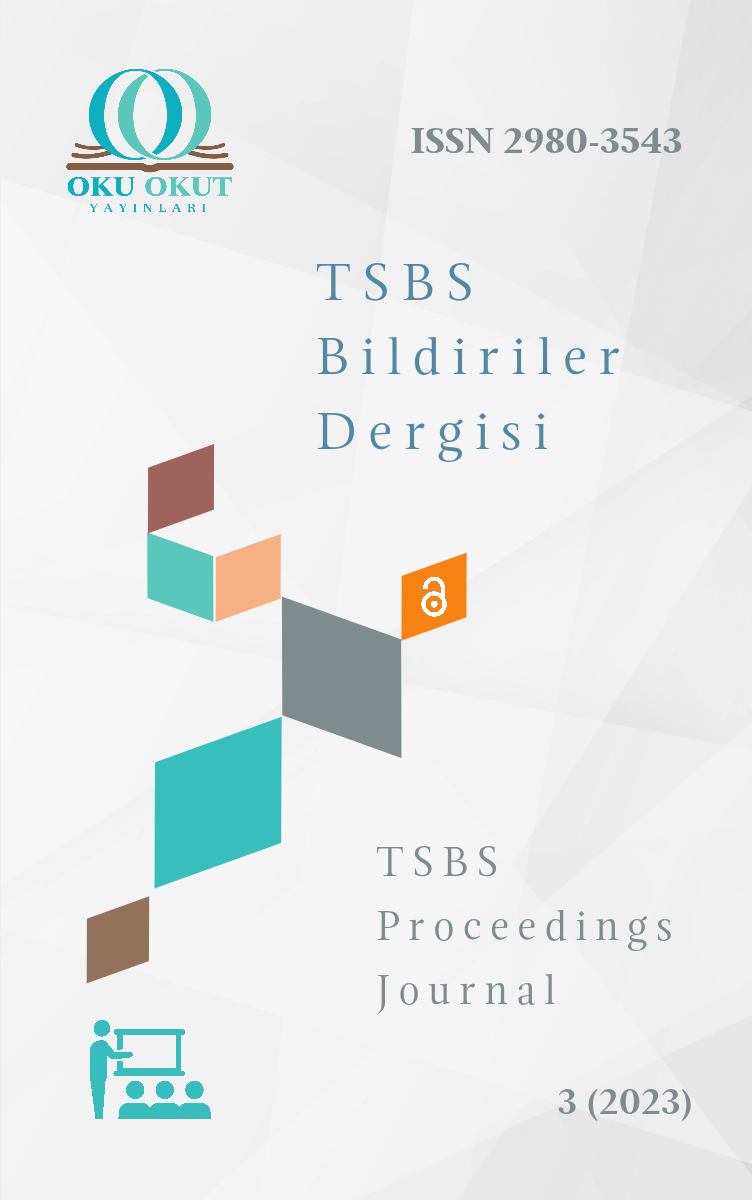The Fate of the Shayk al-Islam Archive Documents and Its Buildings
Şeyhülislamlık Arşivi Evrakı ve Binalarının Serencâmı
The Ottoman Empire made the Shaykh al-Islam an institution, inherited from the previous Islamic states. The institution, which had existed since the foundation of the state, was moved to a fixed and detached place with the abolition of the Janissary Corps in 1826. With its transfer to the Aga Gate in 1827, the fatwa service was also carried out in this place, and in 1836 it was moved to the Bab al-Meshihat, where the kazasker (military judge) and the Istanbul Qadi (judge) Fatwahana (fatwa office) were located. This institution, which formed the Ottoman Ilmiye class and the religious bureaucracy, in the historical process it has been called by various names such as "Shaykh al-Islam," "Bab al-Mashihat," "Bab al-Fatwa," "Ilmiye Department," "Mashihat," "Mashihat Department," Mashihat Office,” “Mashihat al-Islamiyyah,” “Fatwahana” and “Fatwahana al-Ali.” After the Tanzimat, the Shaykh al-Islam Institution, along with others, took its place in the bureaucratic structure of the state and was organized systematically. The institution, which had been operating with its religious, legal, and educational units in the historical process, had carried out the duties of the Presidency of Religious Affairs, the Ministry of Justice, and the Ministry of National Education. Then it transferred some of its obligations, authorities, and responsibilities to the newly established ministries due to the changes in the state structure in 1900-1924. The Meshihat Archive, which contains the scientific heritage of Shayk al-Islam Institution, is the most valuable resource that carries the bureaucratic structure, organizational system, and official correspondence, namely the diplomacy of the institution. The architectural structure of the institutional buildings, the bureaucratic structure of the institution, and its functioning have survived to the present thanks to these documents. In this study, the spatial adventure witnessed by the Bab al-Meshihat during the transition from Shayk al-Islam to the Istanbul Mufti and the fate of 5,454 registers and over one million documents in the Shayk al-Islam Archive were discussed in detail. Methodologically, the study was based on the microhistory approach. With the microhistory approach, which means clarifying the lived events based on the details, the journey of the Meshihat Authority and the archive documents to the present has been revealed, particularly the records of the Shayk al-Islam archive. As a result, it has been determined that the archive registers and documents have not reached the present due to the fire, repair, renovation, and restorations of the Meshihat Authority, which had a vast organizational structure, including committee of fatwas, religious edicts, the council of juridical investigations, office of student affairs and student welfare council, council for the examination of manuscripts and religious texts, the council of religious scholars, correspondence department, academic affairs department, orphan funds, and treasury directorate, personnel directorate, civil registry directorate, archives directorate, supreme medical bureau for issuing fatwas, sharia courts, various committees, and madrasahs. Additionally, it has been explained that most of the archive resources were destroyed due to the overthrow of some of the Shayk al-Islam buildings and the burning of some after 1924.
Osmanlı Devleti, kendisinden önceki İslâm devletlerinden tevarüs ettiği Şeyhülislâmlığı bir müessese haline getirmiştir. Devletin kuruluşundan itibaren var olan Şeyhülislâmlık, 1826 yılında Yeniçeri Ocağı’nın kaldırılmasıyla birlikte sabit ve müstakil bir mekâna taşınmıştır. Şeyhülislâmlığın 1827 yılında Ağa Kapısına nakledilmesiyle birlikte fetvâ hizmeti de bu mekânda yürütülmüş ve 1836’da kazaskerlik ve İstanbul Kadıları Fetvâhâne’nin bulunduğu Bâb-ı Meşîhat’e taşınmıştır. Osmanlı ilmiye sınıfı ve din bürokrasisini meydana getiren bu kurum, tarihi süreçte “Şeyhülislâmlık”, “Bâb-ı Meşîhat”, “Bâb-ı Fetvâ”, “Dâire-i İlmiye”, “Meşîhat”, “Dâire-i Meşîhat”, “Makâm-ı Meşîhat”, “Meşîhat-i İslâmiyye”, “Fetvâhâne” ve “Fetvâhâne-i Âlî” gibi çeşitli isimlerle anılmıştır. Tanzimat’tan sonra diğer kurumlarla birlikte Şeyhülislâmlık da devletin bürokratik yapısında yerini almış ve sistematik bir şekilde örgütlenmiştir. Tarihi süreçte dinî, hukukî ve eğitim alanındaki birimleri ile faaliyet gösteren ve günümüzdeki Diyanet İşleri Başkanlığı, Adalet Bakanlığı ve Millî Eğitim Bakanlığı’nın görevlerini yürütmüş olan Şeyhülislâmlık, 1900-1924 yıllarında devlet yapısındaki değişiklikler neticesinde görev, yetki ve sorumluluklarının bir kısmını yeni kurulan bakanlıklara devretmiştir. Şeyhülislâmlığın ilmi mirasını barındıran Meşîhat Arşivi, Şeyhülislâmlığın bürokratik yapısını, teşkilat sistemini ve resmî yazışmalarını yani diplomatikasını günümüze taşıyan en kıymetli kaynaktır. Şeyhülislâmlık binalarının mimari yapısı, kurumun bürokratik yapısı ve işleyişi bu belgeler sayesinde günümüze taşınmıştır. Bu çalışmada Şeyhülislamlıktan İstanbul Müftülüğü’ne geçiş sürecinde Bâb-ı Meşîhat’in tanıklık ettiği mekânsal serüven ve Şeyhülislamlık Arşivi’ndeki 5.454 adet defter ve bir milyon adedin üzerindeki evrakının serencâmı detaylı bir şekilde ele alınmıştır. Bu çalışmada, metodolojik olarak mikrotarih yaklaşımına göre hareket edilmiştir. Ayrıntılardan yola çıkarak yaşanmış olayların açıklığa kavuşturulması anlamına gelen mikrotarih yaklaşımla Şeyhülislamlık arşivi evrakı özelinde Meşihat Makamının ve arşiv evrakının günümüze ulaşma serüveni ortaya konulmuştur. Çalışmamız neticesinde fetvâhane-i âlî, hey’et-i iftâiyye, îlâmât-ı şer’iyye, meclis-i tetkîkât-ı şer’iyye, ders vekâleti ve meclis-i mesâlih-i talebe, tetkîk-i mesâhif ve müellefât-ı şer’iyye meclisi, meclis-i meşâyih, mektûbî dâiresi, ilmiyye muhâsebât dâiresi, emvâl-i eytâm ve beytü’l-mal müdüriyeti, memûrîn müdüriyeti, sicill-i ahvâl müdüriyeti, evrak müdüriyeti, Dâire-i celîle-i fetvâ penâhi tabâbeti, şer’î mehâkim, çeşitli encümenler ve medreseler olmak üzere geniş bir teşkilat yapısına sahip olan Meşihat Makamının geçirdiği yangın, tamir, tadilat ve restorasyonlar neticesinde arşiv defter ve belgelerinin günümüze kadar ulaşmadığı tespit edilmiştir. Ayrıca 1924’ten sonra Şeyhülislamlık binalarının bir kısmının devredilmesi ve bir kısmının da yanması sonucu arşiv kaynaklarının çoğunun yok olduğu izah edilmiştir.

Telif Hakkı (c) 2023 Dr. Öğr. Üyesi Esra Yıldız
Bu çalışma Creative Commons Attribution-NonCommercial 4.0 International License ile lisanslanmıştır.
CC BY-NC 4.0 lisansı, eserin ticari kullanım dışında, her türlü ortam ve formatta paylaşılmasına, kopyalanmasına, çoğaltılmasına ve orijinal esere uygun şekilde atıfta bulunmak kaydıyla yeniden düzenlenmesine, dönüştürülmesine ve eser üzerine inşa edilmesine izin verir.
Makale Bilgileri
- Konu İslam Tarihi - Siyer
- Gönderim 6 Mayıs 2023
- Yayım 11 Ağustos 2023
- Sayı Sempozyum 3 (2023): TSBS Bildiriler Dergisi
- Bildiri Bilim Alanı İslam Tarihi - Siyer
- Kategoriler
Yıldız, Esra. “Şeyhülislamlık Arşivi Evrakı Ve Binalarının Serencâmı”. Türkiye Sosyal Bilimler Sempozyumu 3 (August 11, 2023), 163-166. https://doi.org/10.55709/TSBSBildirilerDergisi.277






